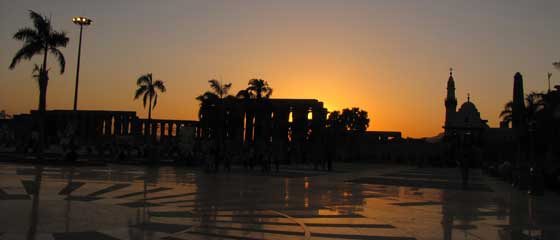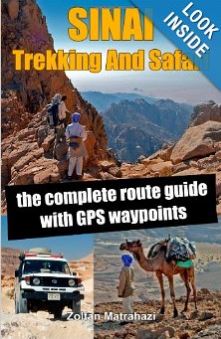
UNESCO Sites in Egypt
Cultural & Natural World Heritage Sites in Egypt, What is UNESCO, How to become inscripted? And what does it all mean anyway?
Across the 1 million square kilometres that comprise the Egyptian landmass, the United Nations Educational, Scientific and Cultural Organisation (UNESCO) have identified some 7 cultural and natural world heritage sites, with a tentative list of 30 plus potential sites under consideration for future inclusion.
These include:
Cultural World Heritage Sites in Egypt
1) Abu Mena
Arguably the lesser known of Egypt’s cultural UNESCO inscribed sites, Abu Mena refers to the tomb of the Martyr Menas of Alexandria and the church, basilica, monastery and homes built in its immediate vicinity.
Actually located south of the City of Alexandria, Abu Mena was constructed from the 3rd century AD and grew as a pilgrimage destination for early Christians in the 5th and 6th centuries AD.
Abu Mena is the only Egyptian site, and one of 35 other global sites
listed as ‘World Heritage Sites in Danger’ largely due to its decaying
state of near collapse.
Abu Mena was inscribed on the UNESCO list in 1979.
2) Ancient Thebes and the Necropolis
Thebes is the Greek name given to the former capital of Ancient Egypt founded in the 21st Century BC, the remains of which comprise many of the tourist sites located on the West and East Bank of the River Nile around Luxor.
Today those sites include the Luxor Temple and the Karnak Temple on the East Bank and the Theban Necropolis on the West Bank (which includes the Valley of the Kings and the Valley of the Queens).
The site was inscribed to the UNESCO list in 1979.
Read more about attractions in Luxor.
3) Historic Cairo
Also inscribed on the UNESCO list in 1979 are the areas of the Capital know as old, Islamic or historic Cairo. Too often overlooked by travellers, the narrow streets located to the south of Sharia Al Azhar comprise some of the city’s oldest neighbourhoods, jam packed with tiny market streets, once opulent town houses, mosques and madrassas built from the 10th century in the growing city that was to become the rising star of the Islamic world.
4) Memphis and its Necropolis
Memphis was the capital of the old Kingdom of Ancient Egypt of which were born some of the world’s most enduring monuments. These include - most famously of course - the Pyramid Tombs of the Giza Plateau, and to a lesser extent the smaller but no less breathtaking Pyramids of Dahshur and Saqqara.
5) Abu Simbel and the Philae Temple
The Temples of Abu Simbel and the Philae are some Egypt’s most southern monuments and the first to come under UNESCO’s protective wing following the building of the Aswan Damn with threatened their potential destruction.
6) The St Catherine’s Area
In the heart of the St Catherine’s protectorate is St Catherine’s Monastery, arguably the most famous orthodox monastery in the world.
Built at the foot of the biblical Mount Sinai, it was here that Moses was said to have lead the Israelites on their journeys around Sinai. And, after spending forty days and nights ascending its summit, Moses was to return brandishing the Ten Commandments on two stone tablets.
Today the monastery houses a church open to the public, a collection of icons, art work and manuscripts second only to the Vatican and a descendent of the very ‘burning bush’ through which God was said to have presented himself to the Old Testament Profit.
The St Catherine’s Area was inscribed on the UNESCO list in 2002.
Read more about visiting St Catherine's
Natural World Heritage Sites in Egypt
1) Wadi Al-Hitan or Whale Valley
Located in the Western desert, Whale Valley is called such due to the abundance of the Whale fossils scattered around the region.
The fossils are significant because they demonstrate a key stage in the evolution of Whales - their transformation from a land based mammal to an ocean dwelling one - and the fossils here show some of those final stages of evolution including the gradual disappearance of their hind legs.
Whale Valley was the most recent Egyptian site to be inscribes onto the UNESCO list in 2005.
What is UNESCO?
With its headquarters in Paris, UNESCO is an international community dedicated to the protection and preservation of the world’s most outstanding natural and cultural monuments.
Following principals that have existed since the end of the First World War, UNESCO’s own history is inextricably linked to some of the Egyptian monuments it exists to protect.
One of the organisation’s earliest and most noteworthy triumphs was the protection of the Abu Simbel temples of Upper Egypt which would have been both flooded and destroyed following the building of the Aswan High Dam in the 1960s.
Follow an appeal from the Egyptian and Sudanese governments in 1959; UNESCO launched a campaign to protect the prodigious monuments. The campaign evoked donations of more than 40$ million from member nations enabling the entire site to be relocated piece by piece to a new location, safe from the waters on the Sudanese border.
How does a site become UNESCO?
In order for a site to be accepted on the UNESCO list, it must be nominated and meet the agreed ten criteria (see 10 criteria for UNESCO Inscription).
What does UNESCO inscription mean anyway?
To be inscribed on the UNESCO World Heritage Site list means a general increase in awareness for the listed site and a resulting increase in related tourism.
Local government and other bodies will likely provide greater protection for the site and a country may also receive ‘financial assistance and expert advise’ from the World Heritage Committee.
For a site to be inscribed on the list, the state in which it resides must first sign the convention concerning the ‘Protection of the World Cultural and Natural Heritage’.
There are currently 187 signatories of the convention (called ‘States Parties) making it the closest thing to a universal set of principals governing the protection of the world’s most deserving sites.
For More Information:
UNESCO Sites in Egypt - From the Horses Mouth




